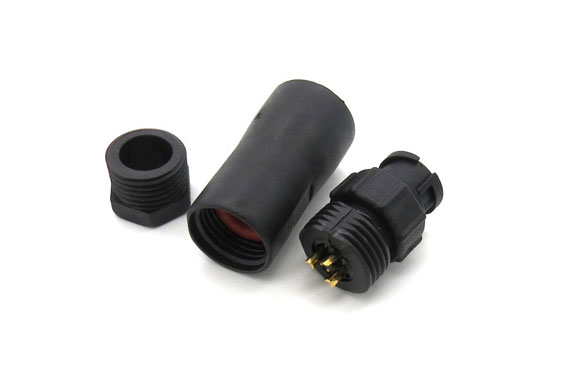The kownledge of connector solding
Many connectors and related components are typically connected by some capacity through soldering. Welding is the process of joining two metals to a molten filler metal. This process is very similar to welding, but don't misunderstand the two. The weld does not melt the working metal, but melts the added metal between the two. Some less common methods of joining two metals are brazing and the use of organic compounds (epoxy resins). Here are some knowledge on connector soldering.


Wetting and diffusion of connector soldering
At the beginning of the welding process, a waxy substance called "flux" is applied to the metal. This wets the material, removes oxides and cleans the metal. Wetting metal is necessary to connect the molten solder to the solid substrate and connect the two. These two metals have different interfacial energies and require flux to connect them. As the surface area increases due to melting, the energy in the solder increases. Wetting also compensates for differences in energy. Wetting can also be explained by the use of surface tension rather than surface energy as a balance.
When the solder melts and mates with the substrate, it dissolves a portion of it, forming a change in dissolution rate. In particular, it depends on the combination of solder and substrate. An increase in solder temperature can also change the rate of dissolution. When molten solder interacts with the substrate, it produces an intermetallic compound or "IMC." Due to the frequent use of these metals in electrical interconnects, these IMCs can typically be present in the form of tin-copper and tin-nickel. When creating an IMC, they can be identified by using an electronic instrument such as X-rays. X-ray diffraction (XRD) and scanning electron energy dispersive X-ray analysis (SEM EDAX) are examples of such advanced methods of identifying IMC after welding metal.
Connector soldering quality
Soldering a connector to a printed circuit board is more challenging than other components on the PCB. The size and thermal mass of the connector make soldering more and more difficult. Additional residence time and higher temperatures may be required to fully melt the solder and wet the substrate. Because of the higher temperatures and residence times required, additional pressure is placed on the PBC and the welded components. This strain may be unavoidable, but strict adherence to control parameters can reduce these adverse effects.
Important mechanical and electrical principles are observed when soldering joints on the PCB. Joint defects must be identified and avoided. The joint must be strong, have good integrity, and remain uniform in appearance of the substrate and terminal. If you don't pay attention to these factors, the joints may become unreliable and cause many problems. Insufficient wetting at the mating point may leave excessive oxide or contamination, resulting in delamination. Welding cracks may occur when voids or irregular growth occurs in the metal. These problems can cause the joint to be weak and must be avoided under overheating or mechanical conditions. Defects in the solder make it more and more brittle.
Connector soldering other problems
One consideration that many may not know is the potential damage of the contact spring. Although the time and temperature of exposure to the contact spring may be too small, it is always possible that the facing on the interface may be damaged. The soldering process creates a diffusion on the base metal and may oxidize the coating. Increased oxidation upon contact may increase resistance to unacceptable levels. Copper diffusion through gold is very common and causes problems especially in low voltage and current applications.
The general soldering capability of the contacts must be observed before deciding on the solder contacts. Consideration must be given to its shelf life, issues related to diffusion, IMC growth and corrosion. In particular, the components involved must maintain solderability in terms of solderability from soldering. These items include: terminations, solder tails, pads and plated through holes drilled into the PCB.
Yeahui is a connector supplier with 11 years of experience in developing high quality connectors and wiring harnesses. wo have many types of products, including obd connectors, circular connectors, agricultural connectors and so on.We can meet the requirements of various customers. Feel free to learn more about connectors or buy our connectors,looking forward to your message.
Read more about the connectors(The most indispensable connector for electronic products).
评论
发表评论